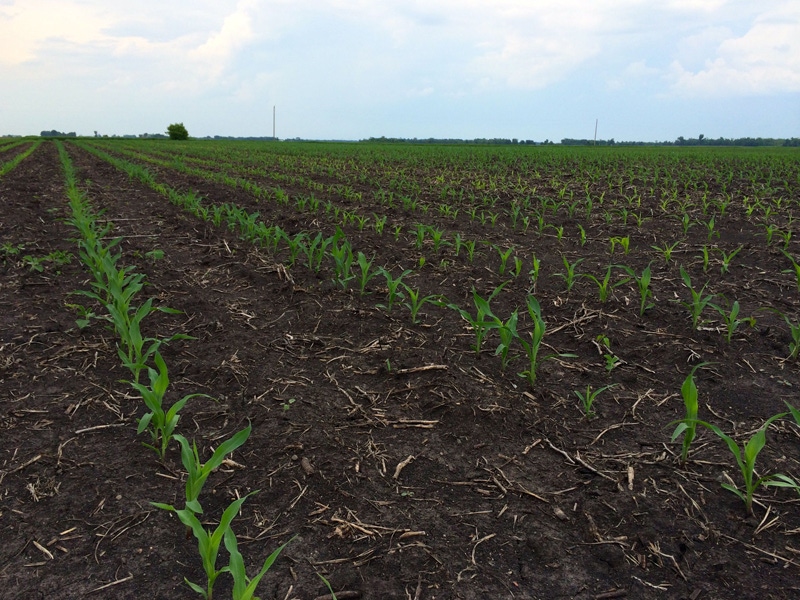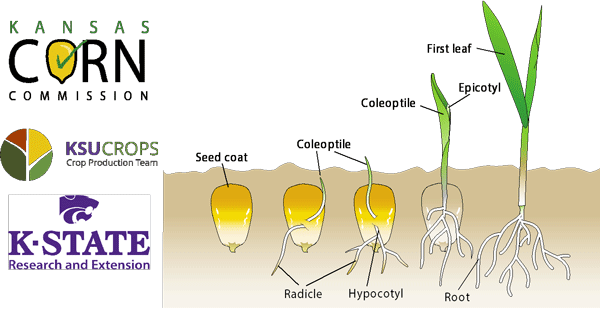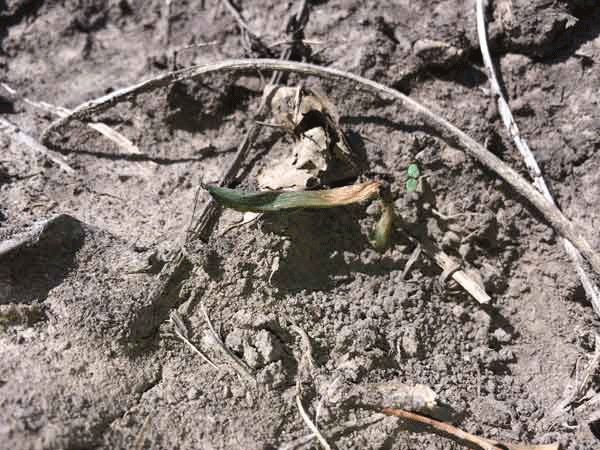April 16, 2018

Source: Kansas State University
Cold temperatures can result in injury to the germinating seed (Figure 1) as it is absorbing moisture – a problem called imbibitional chilling injury. When soil temperatures remain at or below 50 degrees F after planting, damage to germinating seed can occur.
Soil temperatures at the 4-inch depth during the first 24-72 hours after planting, when the kernels imbibe water and begin the germination process, are critical. Kernels naturally swell when hydrating – taking in water. If the cell tissues of the kernel are too cold, they become less elastic and may rupture during the swelling process, resulting in “leaky” cells. Injury symptoms may include swollen kernels that fail to germinate or aborted growth of the radicle and/or coleoptile after germination has begun.

Figure 1. Germination and emergence process in corn.
Chilling injury can also occur following germination as the seedlings enter the emergence process, reducing plant metabolism and vigor, potentially causing stunting or death of the seminal roots, deformed elongation (“corkscrewing”) of the mesocotyl, leaf burn (Figure 2), and either delayed or complete failure of emergence, often leafing out underground. Chilled seedlings may also be more sensitive to herbicides and seedling blights.
Before making any decisions, fields should be scouted 4-7 days after the cold occurred since the extent of the damage and potential for new growth will be evident during this time.

Figure 2. Leaf burn from freeze damage early after corn emergence. Photo by Ignacio Ciampitti, K-State Research and Extension.
You May Also Like




